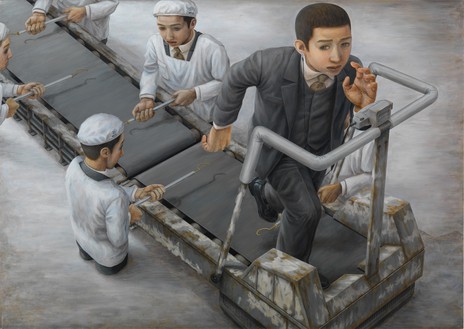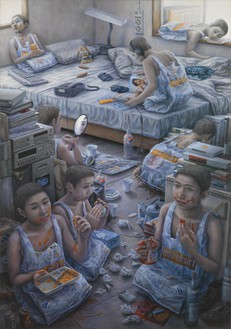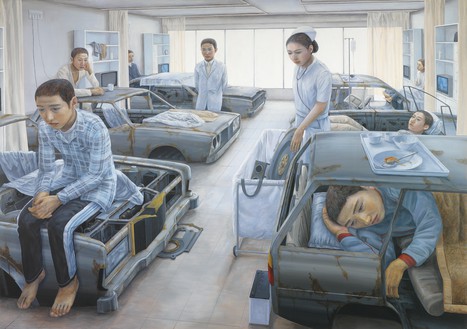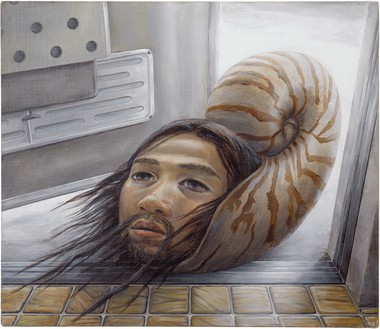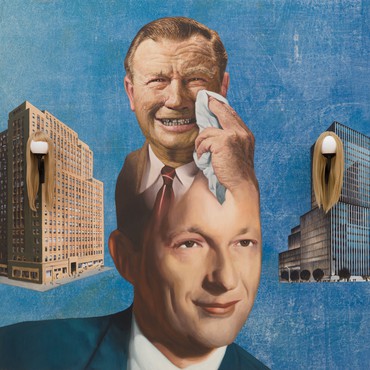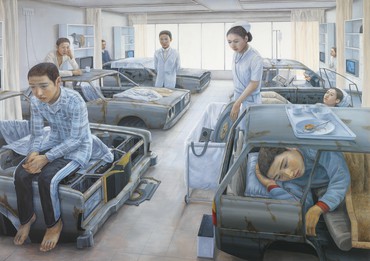About
Over the course of just ten years, Tetsuya Ishida (1973–2005) produced a striking body of work centered on themes of human isolation and alienation. Ishida came of age as an artist during Japan’s “lost decade,” a period of nationwide economic recession that lasted through the 1990s. His paintings capture the feelings of hopelessness, claustrophobia, and emotional isolation that dominated Japanese society during this time, even—or perhaps especially—in the wake of its rapid technological advancement. From his early career until his untimely death in 2005, Ishida conjured vivid allegories of the challenges to Japanese life and morale in paintings and graphic works charged with Kafkaesque absurdity.
Ishida was born in Yaizu, Shizuoka Prefecture, Japan. An early encounter with the illustration work of Lithuanian American Social Realist Ben Shahn—specifically his images of the 1954 Lucky Dragon incident, in which Japanese fishermen were exposed to radiation from a nuclear bomb test conducted by the United States military—proved formative to his creative vision. Ishida’s focus on social commentary was established through his participation in a local writing contest, to which he submitted a response to Shahn’s art, and a 1984 human-rights-themed manga competition, which he entered with a comic strip titled Yowaimonoijime wa yameyou! (Stop Bullying Weaklings!), which underscored his concerns about an overdependence on technology.
In 1992, Ishida enrolled at Musashino Art University in Tokyo, earning a degree in Visual Communication Design in 1996. That same year he began exhibiting paintings at galleries in the Ginza district. Between 1996 and 2005, Ishida showed his paintings across the country, and in 1998, they were included in the first auction of East Asian contemporary art at Christie’s—alongside the work of a young Takashi Murakami—contributing to a surge in interest in his practice.
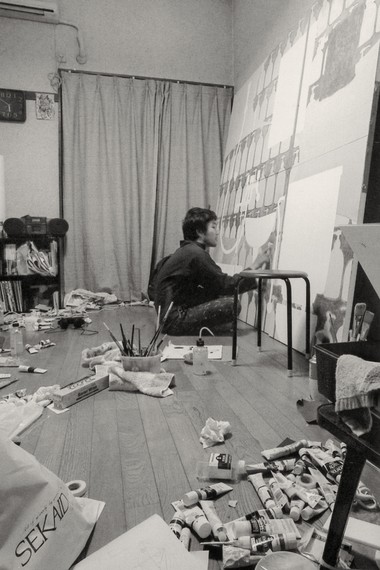
Photo: © Tetsuya Ishida, courtesy Tetsuya Ishida Estate
#TetsuyaIshida
Exhibitions
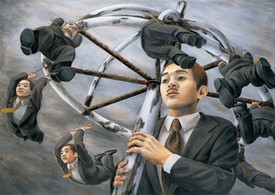
Nostalgia and Apocalypse
In conjunction with My Anxious Self, the most comprehensive survey of paintings by the late Tetsuya Ishida (1973–2005) to have been staged outside of Japan and the first-ever exhibition of his work in New York, Gagosian hosted a panel discussion. Here, Alexandra Munroe, senior curator at large, Global Arts, Solomon R. Guggenheim Museum and Foundation, and Tomiko Yoda, Takashima Professor of Japanese Humanities at Harvard University, delve into the societal context in which Ishida developed his work, in a conversation moderated by exhibition curator Cecilia Alemani.
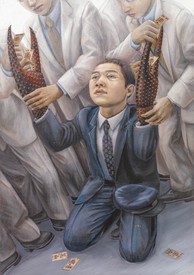
Tetsuya Ishida: My Weak Self, My Pitiful Self, My Anxious Self
The largest exhibition of the Japanese artist Tetsuya Ishida’s work ever mounted in the United States will open at Gagosian, New York, in September 2023. Curated by Cecilia Alemani, the show tracks the full scope of Ishida’s career. In this excerpt from Alemani’s essay in the exhibition catalogue, she contextualizes Ishida’s paintings against the background of a fraught era in Japan’s history and investigates the work’s enduring relevance in our own time.
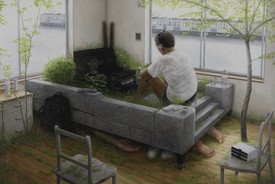
Tetsuya Ishida’s Nihilist Realism
Mika Yoshitake details the economic, psychological, and cultural conditions that gave rise to Tetsuya Ishida’s unique strain of Japanese postwar realism.
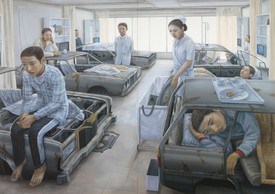
Tetsuya Ishida: Painter of Modern Life
Yūko Hasegawa explores the fantastical convergences and amalgamations in Tetsuya Ishida’s paintings, their connections to manga and advertising imagery, and the shift that occurred in the artist’s work as he moved from acrylic to oil paint in 2000.
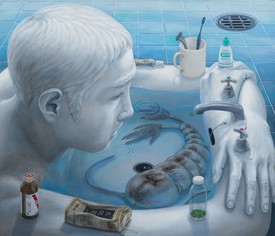
Tetsuya Ishida’s Testimony
Edward M. Gómez writes on the Japanese artist’s singular aesthetic, describing him as an astute observer of the culture of his time.
Fairs, Events & Announcements
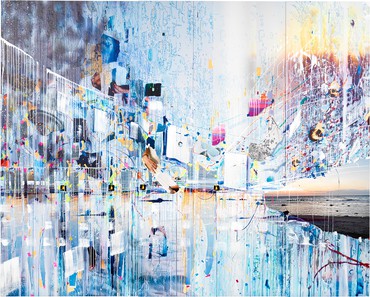
Art Fair
Art Basel Hong Kong 2024
March 27–30, 2024
Hong Kong Convention and Exhibition Centre
www.artbasel.com
Gagosian is participating in Art Basel Hong Kong 2024 with a selection of works by international contemporary artists. The works on view, which embrace a dizzying variety of subjects and approaches, see the participating artists identify fresh ways to disrupt established histories of abstraction and figuration, and instill sculptural and painterly representations of the natural world with complex cultural significance.
Sarah Sze, Turning and Turning, 2024 © Sarah Sze. Photo: Maris Hutchinson
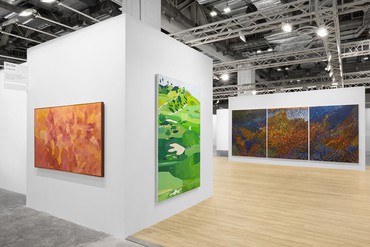
Art Fair
ART SG 2024
January 19–21, 2024, booth BC06
Marina Bay Sands Expo and Convention Centre, Singapore
artsg.com
Gagosian is pleased to participate in the second edition of ART SG, with a selection of works by international contemporary artists including Harold Ancart, Georg Baselitz, Ashley Bickerton, Amoako Boafo, Dan Colen, Edmund de Waal, Nan Goldin, Lauren Halsey, Hao Liang, Keith Haring, Damien Hirst, Tetsuya Ishida, Alex Israel, Donald Judd, Y.Z. Kami, Emily Kame Kngwarreye, Rick Lowe, Takashi Murakami, Takashi Murakami & Virgil Abloh, Nam June Paik, Ed Ruscha, Jim Shaw, Alexandria Smith, Spencer Sweeney, Stanley Whitney, Jonas Wood, and Zeng Fanzhi. The works on view, which embrace a wide variety of subjects and approaches, find artists infusing traditional genres such as history painting, portraiture, and landscape with new and surprising ideas that traverse cultural and temporal boundaries.
Gagosian’s booth at ART SG 2024. Artwork, left to right: © ADAGP, Paris, 2024, © Jonas Wood, © Rick Lowe Studio. Photo: Ringo Cheung
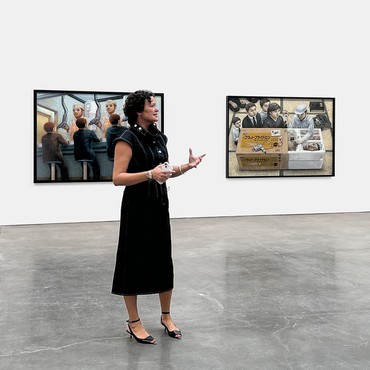
Tour
Tetsuya Ishida: My Anxious Self
With Cecilia Alemani
Thursday, October 12, 2023, 5pm
Gagosian, 555 West 24th Street, New York
Join Gagosian for a tour of Tetsuya Ishida: My Anxious Self at Gagosian, New York, led by exhibition curator Cecilia Alemani. This comprehensive survey of paintings by the artist, divided into five thematic parts, is the first-ever exhibition of his work in New York. Ishida emerged as an artist during Japan’s “Lost Decade,” a recession that lasted through the 1990s, and his paintings capture the feelings of hopelessness, claustrophobia, and disconnection that characterized Japanese society during that time—even in the wake of its rapid technological advancement.
Cecilia Alemani inside the exhibition Tetsuya Ishida: My Anxious Self, Gagosian, 555 West 24th Street, New York, 2023. Artwork © Tetsuya Ishida Estate. Photo: Eleanor Gibson
Museum Exhibitions
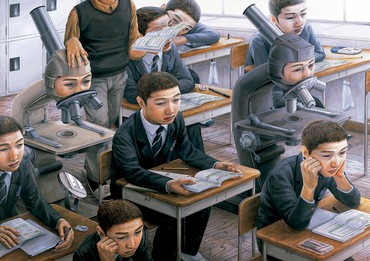
Closed
Tetsuya Ishida
Self-Portrait of Other
October 3–December 14, 2019
Wrightwood 659, Chicago
wrightwood659.org
In a span of just ten years, Tetsuya Ishida (1973–2005) produced a formidable body of work centered on human isolation and alienation in a world dominated by uncontrollable forces. The exhibition features works that evoke the uncertainty and desolation of a Japanese society drastically altered by the technological advances and successive crises that have affected economies and politics all over the world. This exhibition originated at Museo Nacional Centro de Arte Reina Sofía, Madrid, as Autorretrato de otro.
Tetsuya Ishida, Awakening, 1998 © Tetsuya Ishida Estate
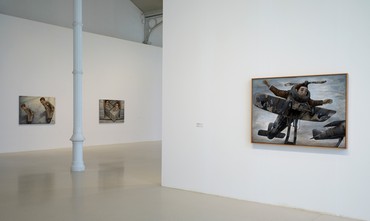
Closed
Tetsuya Ishida
Autorretrato de otro
April 12–September 8, 2019
Museo Nacional Centro de Arte Reina Sofía, Madrid
www.museoreinasofia.es
In a span of just ten years, Tetsuya Ishida (1973–2005) produced a formidable body of work centered on isolation and alienation in a world dominated by uncontrollable forces. This exhibition—whose title translates to Self-Portrait of Other—features works that evoke the uncertainty and desolation of a Japanese society drastically altered by the technological advances and successive crises that have affected economies and politics the world over.
Installation view, Tetsuya Ishida: Autorretrato de otro, Museo Nacional Centro de Arte Reina Sofía, Madrid, April 12–September 8, 2019. Artwork © Tetsuya Ishida Estate
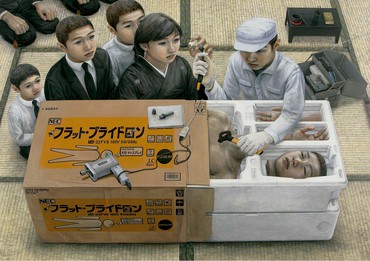
Closed
56th Biennale di Venezia
All the World’s Futures
May 9–November 22, 2015
Giardini and Arsenale, Venice
www.labiennale.org
All the World’s Futures, curated by Okwui Enwezor for the 56th Biennale di Venezia, forms a unitary itinerary with over 136 artists from fifty-three countries, of whom eighty-nine are showing in the Biennale for the first time. The world before us today exhibits deep divisions and wounds, pronounced inequalities, and uncertainties as to the future. The exhibition aims to investigate how the tensions of the outside world act on the sensitivities and the vital and expressive energies of artists, on their desires and their inner songs. Work by Georg Baselitz, Ellen Gallagher, Theaster Gates, Katharina Grosse, Andreas Gursky, Carsten Höller, Tetsuya Ishida, and Taryn Simon is included.
Tetsuya Ishida, Recalled, 1998 © Tetsuya Ishida Estate. Photo: Martin Wong
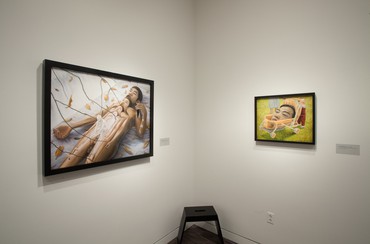
Closed
Tetsuya Ishida
Saving the World with a Brushstroke
November 14, 2014–February 22, 2015
Asian Art Museum, San Francisco
about.asianart.org
The eight paintings shown in Saving the World with a Brushstroke cross the spectrum of Tetsuya Ishida’s major themes: workplace and academic pressures, the search for identity, and social dislocation. The exhibition title derives from an observation the artist recorded in a notebook at age twenty-five: “I am strongly drawn to saint-like artists. The people who truly believe that ‘the world is saved a little with each brushstroke.’” Whether Ishida believed his own works offer any salvation is left for each viewer to consider. This is the artist’s first exhibition in the United States.
Installation view, Tetsuya Ishida: Saving the World with a Brushstroke, Asian Art Museum, San Francisco, November 14, 2014–February 22, 2015. Artwork © Tetsuya Ishida Estate. Photo: © Asian Art Museum, San Francisco

